Discover Mehregan, the Iranian Celebration of Autumn
Uncover the Magic of Mehregan, Iran's Autumn Celebration

The Persian New Year, Nowruz, is often named the most important Zoroastrian celebrations in Iran and for Zoroastrian communities around the world. Yet, there is another festival that was once as important as the New Year in the Zoroastrian tradition: Mehregan.
Also called Jashn-e Mehr, Mehregan is the celebration of the Zoroastrian deity Mithra, also called Mehr, who is responsible for friendship, love and affection according to Zoroastrian belief. As it takes place at the beginning of the fall season, Mehregan is also a festival to mark the beginning of the harvest season, and thus autumn, and celebrate the blessings received.
Contents
When Is Mehregan Celebrated?

Mehregan is a “name-day feast”: it’s a celebration that takes place when the day-name and the month-name dedicated to a particular deity coincide in the year.
In the Zoroastrian calendar, Mehregan is celebrated on the 16th day (day of Mehr) of the seventh month (month of Mehr). In the Gregorian calendar, it generally occurs in the first week of October (on the 1st or 2nd). It’s interesting to note that some scholars believe that Mehr was the first month of the year during the Achaemenid Era. Thus, Mehregan could have also been the celebration of the new year.
Historical Origins and Significance of Mehregan
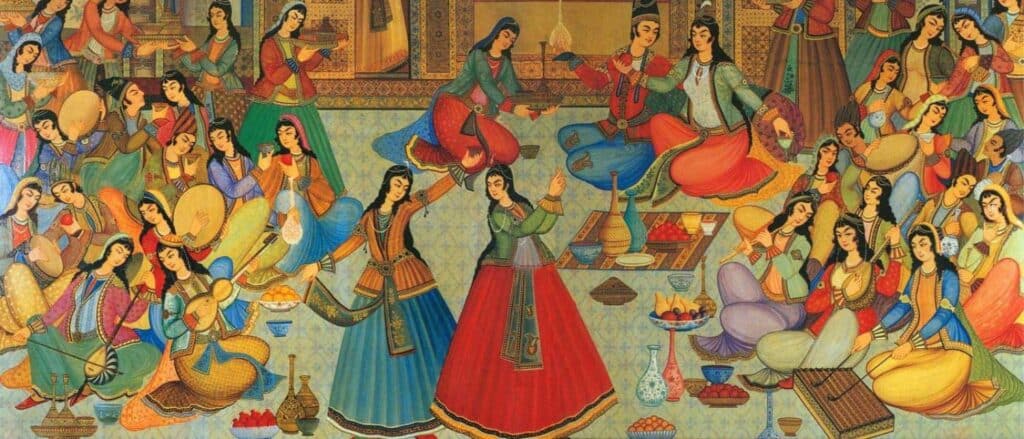
Mehregan is one of the most ancient Iranian celebrations, and may have been the most important festival at some point in Iranian history. It has been celebrated by Zoroastrian communities from ancient pre-Islamic Iran to the Pahlavi Era.
During the Achaemenid Era (330 – 550 BC), the custom was that the Armenian subjects of the Persian king would offer him 20.000 horses during the celebrations of Mehregan. Later, under the rule of the Sasanian Empire, Mehregan became the second most important celebration after Nowruz. Like it was the case for the New Year, huge celebrations were organized in Persepolis for Mehregan. Visitors from all over the Empire would bring gifts to the king on that day. Indeed, not only was Mehregan the beginning of the harvest season, but it was also the time to collect taxes.
All gifts offered to the king on that day would be carefully recorded, some exceeding ten thousand gold coins. Interestingly, if any of the gift-givers needed money later, the court would return twice the amount of the gift to that person.
Gradually, and with the Mongol invasion, the celebrations of Mehregan faded away. Nowadays, only Zoroastrian communities continue to mark this day, with the largest celebrations taking place in Yazd and Kerman.
What’s The Meaning of Mehregan?
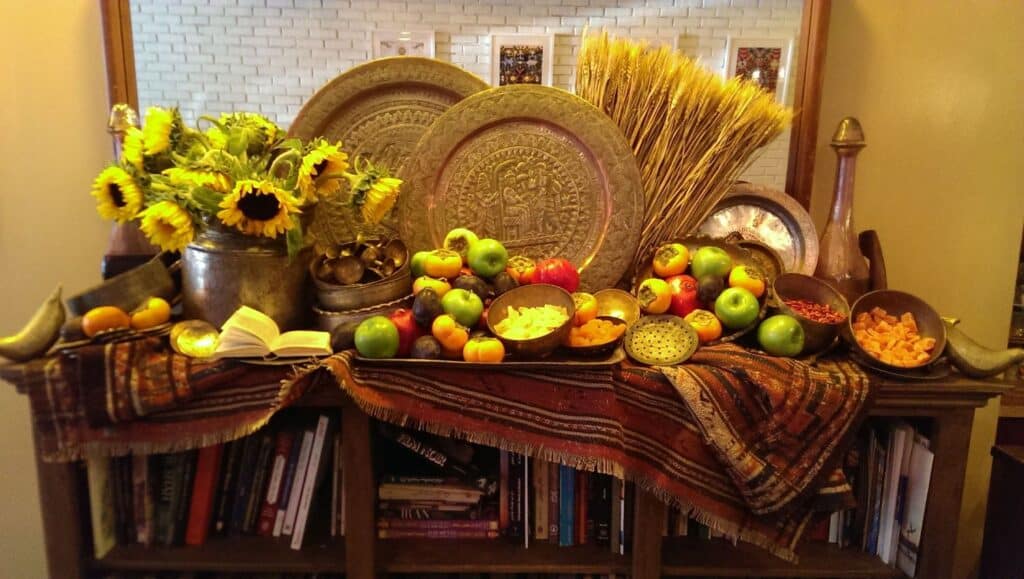
Mehregan is perceived by Zoroastrians as a day to renew their covenant with their God, Ahura Mazda, and all their deities. As Mitra (Mehr) represents love, friendship and affection, it’s a day to express love toward each other and show gratitude for nature’s bounty.
At the core of the celebration is the idea that people should help one another, and the fortunate should show gratitude for what they have received by giving to those with low incomes and the disadvantaged.
Where Is Mehregan Celebrated?
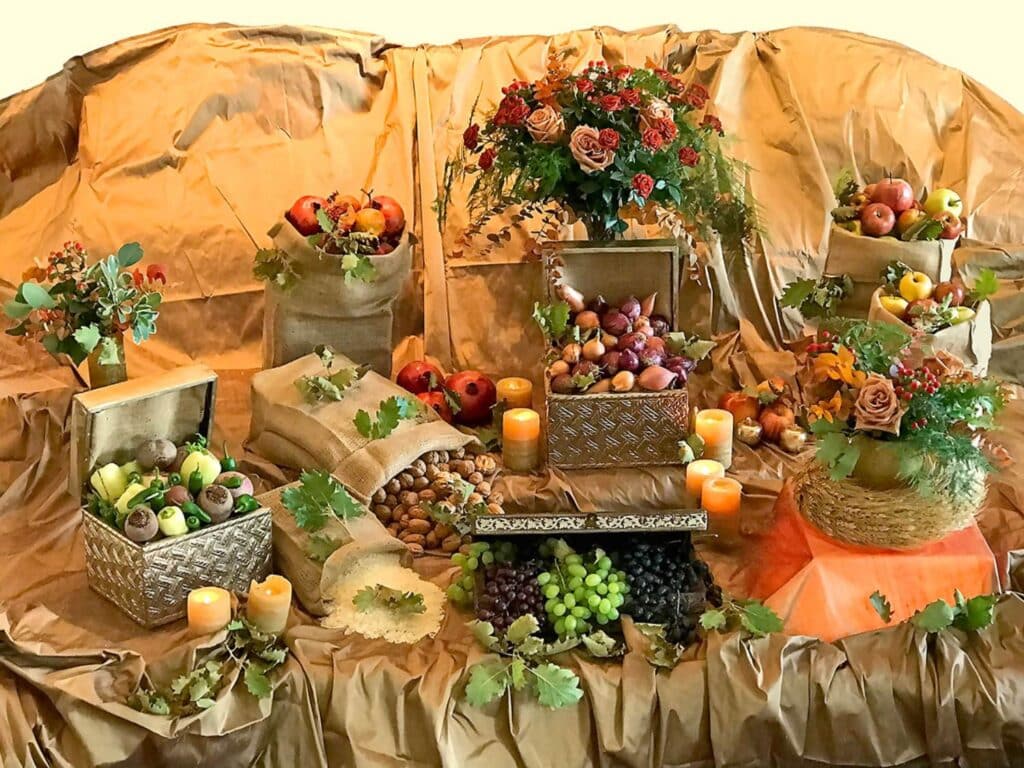
Mehregan is a Zoroastrian celebration, and as such, it takes place way beyond the borders of Iran. In pre and post-Islamic times, Mehregan has also been celebrated in many countries such as India, China, Pakistan, Afghanistan, Iraq, Yemen and Egypt. Nowadays, Mehregan continues to be celebrated all over the world with the Iranian diaspora and Zoroastrian communities (about 110.000 persons in the world).
Traditional Rituals of Mehregan
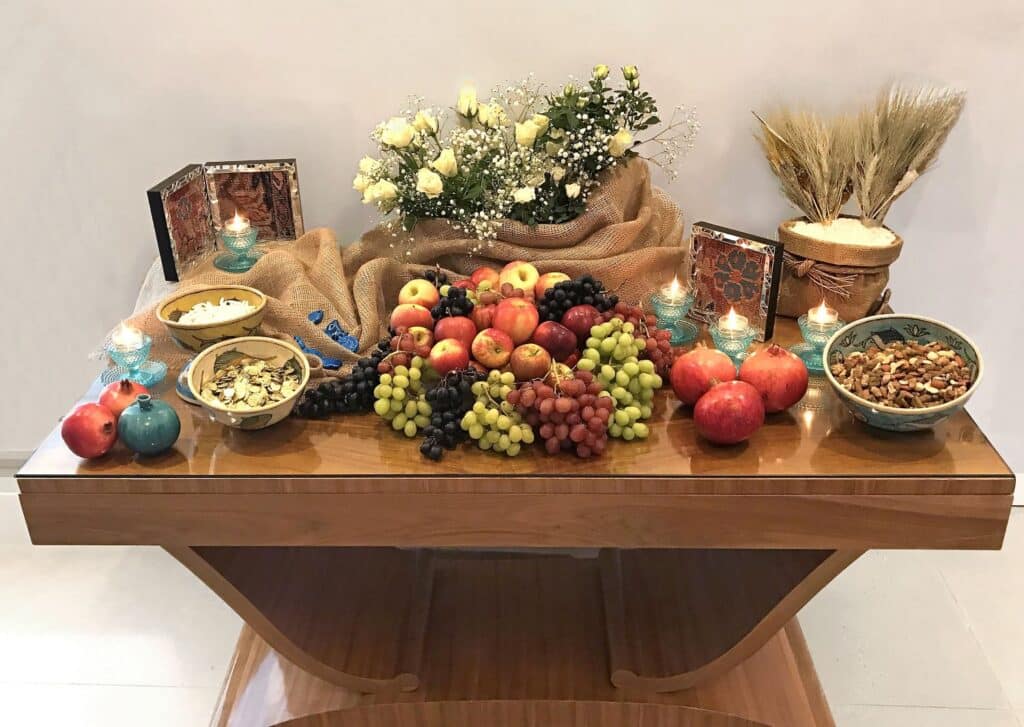
The traditional celebrations of Mehregan consist of setting up a decorative table, called “sofreh” (such as for Nowruz), spending time with family and praying. New clothes are generally worn on that day, as the king would once give away its summer dresses for warmer ones during Mehregan. That led to the tradition of buying and wearing something new to wear on that day.
Read more..
The sofreh is the most important element of Mehregan. It is commonly covered with a purple tablecloth and decorated with the following various elements: dried marjoram, a mirror, an incense burner, a copy of a Zoroastrian scripture (usually The Avesta), silver coins, a “sormeh-dan” (a khol), seeds, nuts, and seasonal fruits such as pomegranate and apples.
The celebration begins at mid-day with all the family standing in front of the mirror to pray and chant hymns. People then drink “Sharbat” (Iranian juice) or pomegranate juice and apply sormeh (kohl) around the eyes: this is seen as a good omen and a way to keep the evil eye away. Seeds (generally lotus and sugar plum) are thrown over each other’s heads before exchanging gifts and embraces.
Experience Mehregan In Iran
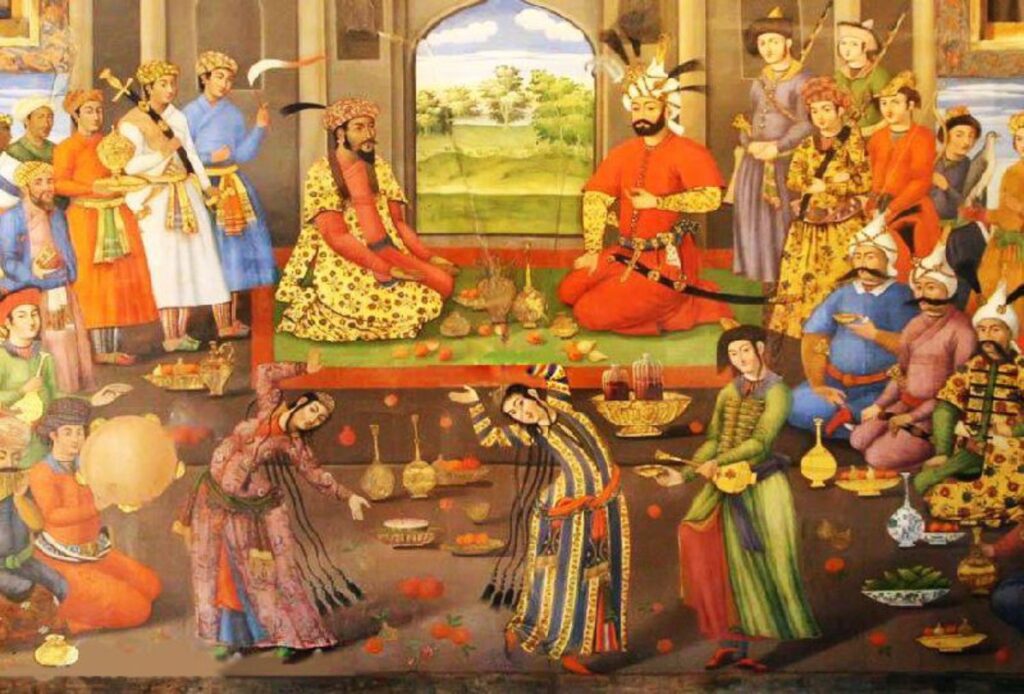
The Bottom Line
Unlike Nowruz, Mehregan is not widely celebrated by all Iranians, and only Zoroastrian communities will organize an event on that day. It’s usually the case in the cities of Yazd and Kerman regions, which hold the largest communities of Zoroastrians in Iran. As this festival takes place in the intimacy of the household, it’s necessary to get in touch with local communities to have the chance to attend Mehregan during your trip to Iran.



